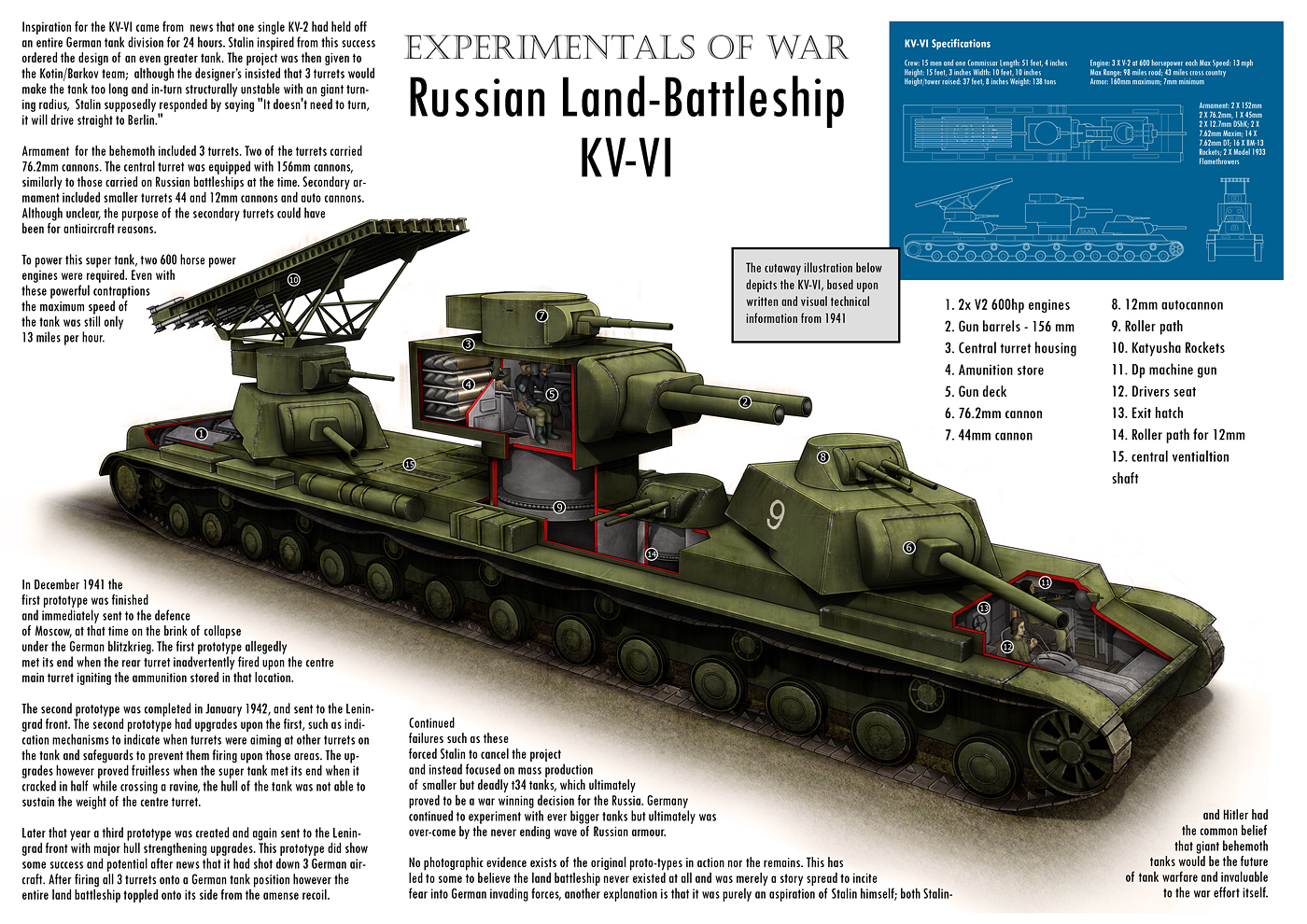... so you can`t have a narrow but very long tank.
Oh, but you can!

Since the collapse of the Soviet Union, new facts have surfaced about the secret weapons developed by the Red Army during WWII. One of the most fascinating of these was the KV-VI Behemoth. In July 1941, Stalin learned of a single KV-II that had held off the entire 6th Panzer Division for more than a day. With the incredible success of this single tank, Stalin ordered a crash program for a land battleship based on the KV-II design. It was to have three turrets and be very heavily armed and armored and able to defend itself against all types of attack. The project was given to the joint team of Kotin/Barkov. When the designers complained to Stalin that the insistence on three turrets made the vehicle too long to have an acceptable turning radius, Stalin's answer was: "It doesn't need to turn, it will drive straight to Berlin." The final design became known as the KV-VI "Behemoth". The KV-VI was a multi-turreted tank using components of the KV-I and II, Bt-5, T-60, and T-38. The use of existing tank designs was necessary because of pressure from Stalin and the strains put on Soviet industry by the German invasion. Because of its massive weight, the tank was equipped with wading devices permitting it to traverse rivers up to 9 feet deep. The team also designed a removable observation tower that could be used to direct the fire of the howitzers and rockets while the tank was in a turret down position.
KV-VI Specifications
Crew: 15 men and one Commissar Length: 51 feet, 4 inches
Height: 15 feet, 3 inches Width: 10 feet, 10 inches
Height/tower raised: 37 feet, 8 inches Weight: 138 tons
Engine: 3 X V-2 at 600 horsepower each Max Speed: 13 mph
Max Range: 98 miles road; 43 miles cross country
Armor: 160mm maximum; 7mm minimum
Armament: 2 X 152mm; 2 X 76.2mm; 1 X 45mm; 2 X 12.7mm DShK; 2 X 7.62mm Maxim; 14 X 7.62mm DT; 16 X BM-13 Rockets; 2 X Model 1933 Flamethrowers
Operational History
The first prototype was completed in December 1941 and was rushed into the defense of Moscow. In its first action during a dense winter fog, the rear turret accidentally fired into the center turret. The resulting explosion completely destroyed the vehicle. The second prototype was completed in January 1942, and was sent to the Leningrad front. This one had indicators installed to show whe another turret was in the line of fire. In its initial attack on the Germans, the tank broke in half when crossing a ravine. A spark ignited the leaking flamethrower fuel and the resulting explosion completely destroyed the vehicle. The third prototype, shown here, had a reinforced hull and was also sent to the Leningrad front in early 1942. It did manage to shoot down three German aircraft. In its first ground engagement, the KV-VI was firing on German positions when coincidentally all of the guns fired from the 3 O'Clock position a the same time. The tremendous recoil tipped the tank into a ditch and the severe jostling set off the 152mm ammunition, which completely destroyed the vehicle. After these failures, Stalin cancelled the project, and many of the design team members spent the rest of their lives in the Gulags of Sibera. The KV-VI was nicknamed "Stalin's Orchestra" by the few Germans that encountered it because of the variety of weapons it deployed.

Note: the above is something less than entirely reliable historical evidence, and should be rgarded as possessing the same legitimacy as a $3 bill.